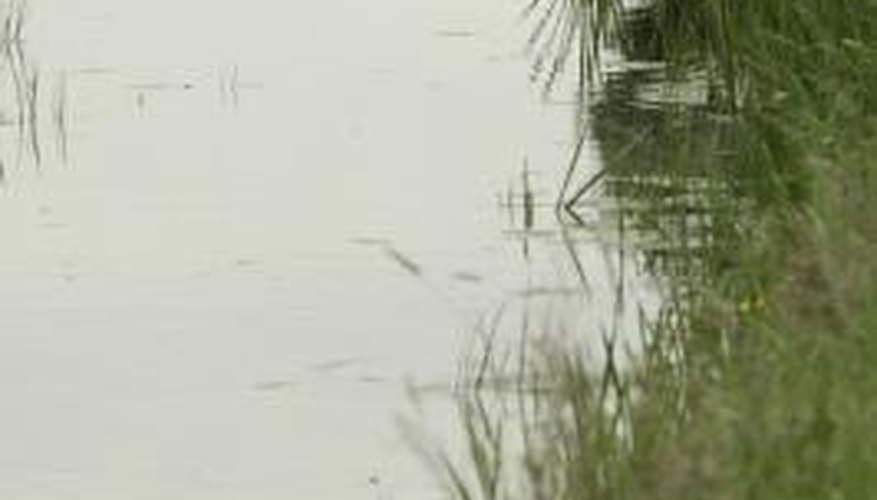Bulrush is perennial plant species that if left unchecked can quickly overtake the shrubbery surrounding garden ponds and other small bodies of water. The invasive plant will quickly overshadow other plants, subsequently killing or weakening them. Removal of this plant will require manual removal of the stem, as well as the use of a powerful glyphosate-based herbicide to remove all remnants of the plant.
- Bulrush is perennial plant species that if left unchecked can quickly overtake the shrubbery surrounding garden ponds and other small bodies of water.
Identify the bulrush plant. Most of these plants will be located along the shorelines of shallow bodies of water. The plant will usually grow between 2 and 5 feet tall. The stems of the bulrush plant are long, thin, and triangular in shape. The seeds of the plant will be located on the tip of the plant, surrounded by small clusters of brown flowers.
Cut the Bulrush as close to the water line as possible. With a pair of gardening shears, cut off the plant at the water line. Make sure to wear protective gardening gloves during the removal process. Try to remove as much as the root system by pulling at the stump. Don't worry if you are not able to remove the root system in its entirety, for the herbicide will finish the job.
Use a broad-spectrum, glyphosate based herbicide. Do not use other commercial herbicides, as they can potentially pollute the water and kill neighbouring plants and wildlife. Herbicides that utilise glyphosate will bind to the silt before being biodegradable. This allows it to be a viable - and environmentally friendly - way of killing bulrush. Follow the directions on the herbicide to comprehensively remove the bulrush plant. Most will require the application of the herbicide in daily or weekly increments.
- Cut the Bulrush as close to the water line as possible.
- Follow the directions on the herbicide to comprehensively remove the bulrush plant.
